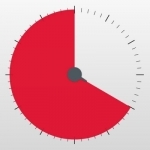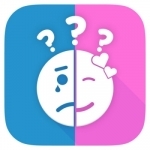Darren (1599 KP) rated In the Heat of the Night (1967) in Movies
Sep 13, 2019
Performances – Sidney Poitier gives us one of the most memorable and powerful performances in any crime film, one that has iconic scenes that will forever stand the test of time. Rod Steiger is brilliant to, he shows us just how conflicted his character is to do the right thing and to keep his backwards mind on racial differences. When we look at the rest of the performances, we see good work from the whole cast.
Story – The story here follows a black detective forced into helping solve a murder in Mississippi while the racial hate between the two whites and blacks still comes off strong. There is two ways to look at this story, first we see how crime takes place and must get solved, which is interesting to keep us guessing throughout because of the large number of potential suspects. That however, isn’t the main story here, the racial divide between the people of town makes this more interesting because seeing how different characters interact with Virgil, some with open smiles, some with gritted smiles and some with pure hate. This shows us how we must witness how America was still filled racial hate in certain states that can point fingers before solving the crimes.
Crime/Mystery – The crime in this movie is murder, though trying to solve this opens up plenty of smaller crimes and deals with the racial hate still going on at the time in Mississippi, the mystery keeps us guessing to just who was the one the committed the crime in the first place.
Settings – The film takes place in Mississippi which for the time was still facing the divide between black and whites, this ups the tension for Virgil trying to solve the crime while also showing us the smaller crimes going on through the town.
Scene of the Movie – They call me Mister.
That Moment That Annoyed Me – The locals can feel too generic.
Final Thoughts – This is one of the greatest crime movies you will ever see, it keeps you guessing from start to finish and deals with the racial hatred that was still going strong in the 1960s America.
Overall: Must watch crime mystery.

Notepad+ Pro
Productivity and Utilities
App
Fully optimized for iPad Pro and Apple Pencil! Notepad+ is pen and paper right on your iPad...

CaptureAudio - Voice, Meeting & Lecture Recorder
Productivity and Education
App
* "Incredibly intuitive recording interface" - Leanna Lofte, iMore.com * "CaptureAudio is a...

Fertility Friend FF App
Health & Fitness and Medical
App
Fertility Friend is the most trusted and accurate fertility tracker. This app is an advanced...

Time Timer: iPad Edition
Productivity and Education
App
Enjoy stress-free time management with the new & improved Time TIMER for iPad (iOS 8 upgrade) – an...

Bipolar Test - Do I Have Bipolar Disorder
Health & Fitness and Education
App
If you have an uncontrollable mood, take a Bipolar Test and this mental health app will help you...

kiddZtube | Safe YouTube Kids
Entertainment and Education
App
kiddZtube is a safe YouTube kids ’ player with curated videos and learning quizzes made by...

Quiver - 3D Coloring App
Entertainment and Education
App
The original augmented reality coloring app “colAR Mix” is now Quiver! Coloring pages have...

Note Rush: Learn Music Sight Reading + Piano Notes
Games and Music
App
A fun game for practising note reading on the music staff to help you learn piano, keyboard, flute,...

DragonBox Algebra 5+
Education and Games
App
DragonBox Algebra 5+ - The game that secretly teaches algebra DragonBox Algebra 5+ Is perfect for...
